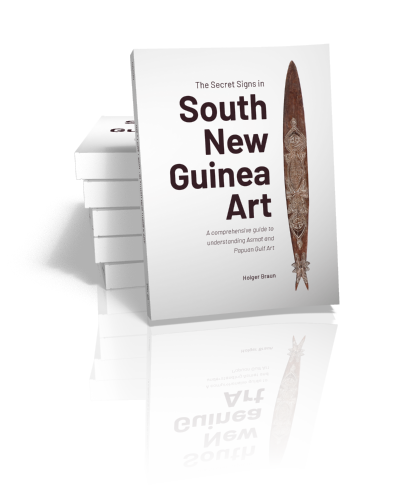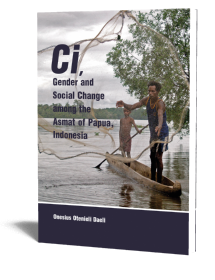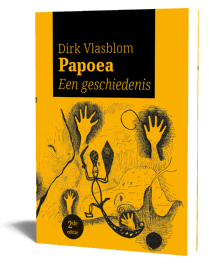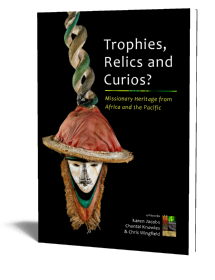Abstract:
The chain of linked cultures of the southern coast of New Guinea, from the Asmat in the west to the Papuan Gulf in the east all share remarkably similar mythology and rituals, inspired by a common ancient worldview.
In this book art historian and anthropologist Dr. Holger Braun takes us on a step by step journey to discover the underlying principles of this ancient worldview which is visible as a secret sign language inscribed into the art objects of this area and intended to be legible exclusively to the initiated.
While the eyes of the non-initiated only perceive an aesthetic impression of a specific artwork, the reader of this book will be able to understand the messages conveyed by key details of the design and thus begins to hear the objects telling their centuries old story – a story about a secret fertility cult in which life must be constantly renewed in order to persist, about initiation into this cult and about its core and sacred culmination, the headhunt.
Dr. Braun’s research opens a completely new perspective in the art history of this region. His finding that the visual signs of South New Guinea are as readable as a script to the initiated greatly enlarges our understanding of this important artistic tradition in human history.
Contents
1. Introduction
2. The Quest for Hidden Cult Knowledge
3. Beyond the Current Life Stage
4. The Worldview in the Cultural Narrative Weave
5. The Bio-Spiritual Cosmology of South New Guinea
5.1 The Cycles of Life
5.2 The Unknown as Nourishment
5.3 The Biological Reproduction of the Social
6. The Secret Spheres of Life and Death
7. The First Ritual Object
8. The Design as a Manual
9. The Ephemeral Body of the Devourer
10. The Permanent Body of the Devourer
10.1 The Bullroarer in the Planting Rite
10.2 The Bullroarer in the Harvesting Rite
10.3 The Bullroarer-Form
10.4 The Bullroarer as Weapon and the Symbol of the Double Spiral
11. The Cult Creature in the West
11.1 Forms of the Bullroarer Creature
11.2 The Devouring Shields
11.3 The Devourer in the Canoe
11.4 The Sphere Model from Manep and the Motif of the Opening
12. The Cult Creature in the East
12.1 The Devourer of the Canoe becomes Gope
12.2 Clan Bullroarers and Bullroarer Masks
12.3 Principles of the Bullroarer Relief Style in the East
12.3.1 Devoured in the Drum
12.3.2 Bioma
12.3.3 Agibe
12.3.4 Imunu and Kakame
12.3.5 Gope-Kwoi-Hohao and Iriwake
13. What we Know is what we Perceive
14. Outlook

Dr.
Holger Braun
Although Dr. Holger Braun (b 1973) originally qualified as an architect, he has been fascinated by the art of New Guinea ever since he was introduced to it by a teacher when he was only 8 years old. This fascination eventually resulted in a doctorate in cultural anthropology and art history at Heidelberg University and the publication of his first book, Zwischensphären (‘Interspheres: The Structure of Cult and Art in South New Guinea‘, 2013), an in-depth examination of mythology, cult and art in South New Guinea.
In his second book The Secret Signs in South New Guinea Art he applies this innovative theoretical framework to enable readers to see the definitive icons of South New Guinea art in a new light by revealing the symbolic meaning of their design in accordance to their use in the great secret cults that dominated pre-contact societies and still exercise considerable power today.
read more











